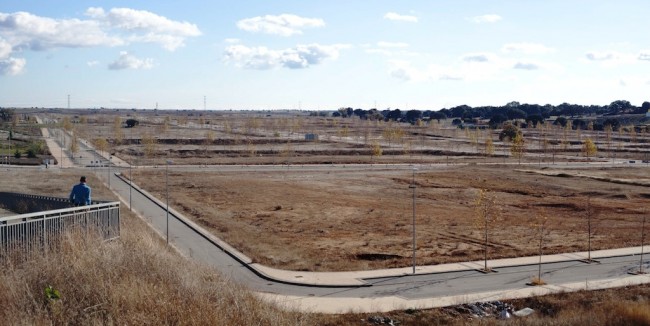
We are celebrating 15 years — and counting — of stories that are deeply researched and deeply felt, that build a historical record of what the city has been.
We are celebrating 15 years — and counting — of stories that are deeply researched and deeply felt, that build a historical record of what the city has been.

Photo by Ricardo Espinosa from his photographic series: A 21st Century Grand Tour
Attention Omnibus readers! Friday, February 22, 2013, Christopher Marcinkoski and Javier Arpa, in cooperation with the Architectural League, will present “The City That Never Was,” a one-day symposium that uses the current economic and urban crisis in Spain as a lens through which to consider future global patterns of urbanization and settlement.
In the 20 years following its accession to the European Union in 1986, Spain underwent unprecedented physical development that radically reshaped its major cities and metropolitan areas. From new housing to commercial and cultural facilities to infrastructure, the country experienced a building boom of such remarkable proportions that by 2005, 20% of Spain’s GDP was attributable to construction-related activities. The equivalent figure for the United States at that time was less than 5%. A year later, The New York Times celebrated Spain as “one of the great architectural success stories in modern history” when reviewing the Museum of Modern Art’s 2006 exhibition On Site: New Architecture in Spain.
Yet today Spain copes with an unemployment rate in excess of 26% and a GDP — according to the latest IMF forecast — expected to shrink by 1.5% this year. The country is littered with unfinished, partially completed or abandoned developments including housing complexes left unenclosed; empty museum buildings with no collections; hundreds of miles of unused roads; and airports without a single arrival or departure. This condition is most severe in Madrid, where over 25% of the urbanized land in and around the city consists of partly vacant or incomplete projects.
However extreme its outcome, this overdevelopment is not unique to Spain. Rather, episodes of failed speculative urbanization are a recurrent circumstance throughout history, taking place at a range of scales with varying degrees of long-term effect. Recent examples of this phenomenon can be found in the Sunbelt region of the United States, as well as in Ireland, Iceland, Panama, Angola, Kenya, and the Persian Gulf. China in particular has been under increased scrutiny of late as a growing number of media reports and images emerge of massive, unoccupied new settlement being built in the country’s interior western and southern provinces. This proliferation globally of unoccupied and incomplete settlement over the past 20 years illustrates broader trends in the processes of urbanization, trends in which presumptions of — and desires for — continuous economic growth instigate intense financial investment and real estate speculation, seemingly indifferent to considerations of local and regional capacities, or changing market demands.
“The City That Never Was” will use the current crises in Spain as a point of departure for challenging the increasingly generic strategies upon which contemporary urban planning and design rely in both established and emerging economies. The event will be organized through four primary themes related to the City That Never Was phenomenon— infrastructure, waste, landscape, and instant urbanism — to explore new possibilities for how future formats of urbanization can be conceived, financed, planned, deployed and inhabited.
To read more about the questions and topics that frame the symposium, explore an extended feature on the Architectural League’s website, which includes an article and discussion with Christopher Marcinkoski and Javier Arpa.
TICKETS
Click here for a complete schedule, information about the speakers, and to purchase tickets. Tickets are $15 for Architectural League members and students with a current ID; $30 for non-members for the full day conference. Individuals from Architectural League member firms may also purchase tickets at the $15 member level. Tickets are also available for the morning or afternoon sessions only. Tickets may be purchased online until 5:00pm today or at the event tomorrow.
TIME AND PLACE
Friday, February 22, 2013
9:00am – 5:30pm
Scholastic Auditorium
557 Broadway, New York
The views expressed here are those of the authors only and do not reflect the position of The Architectural League of New York.